The Tokai Seven: like Ocean’s Eleven, but much older. And less criminal. They are both pretty lucky though.
The Seven Gods of Happiness represent different types of good fortune, and for some reason in Shinagawa there are seven temples, each devoted to one of the Gods. One of the traditions of the New Year is the 初詣, the first visit to a temple of the new year, and while often this occurs at midnight, it isn’t unusual for the first visit to be done anytime in the first few days after the new year. The most busy time of the year is probably the First, and the most busy temple is probably Meiji Jingu. I’m not going to brave those crowds, but since I was staying in Shinagawa, Lisa and I decided to make the rounds and visit all seven temples.
At your first stop, you can buy a poster-board with a spot for each temple. As you go to each temple, you can collect a stamp for that temple. Collect all seven! You can also buy a boat, and buy little figurines that go in the boat at each temple. The suggested order for visiting the temples is:
- Shinagawa (Shinto) Temple, for Daikokuten God of Wealth 品川神社 (大黒天)5 minutes to
- Yougan Temple, for Hoteizen God of Good Fortune 養願寺(布袋尊) 1 minute to
- Isshin Temple, for Jyuroujin God of Long Life 一心寺(寿老人) 5 minutes to
- Ebara Temple, for Ebisu God of Wealth 荏原神社(恵比須) 15 minutes to
- Shingawa (Buddhist) Temple, for Bishyamonten Buddhist Guardian God 品川寺(毘沙門天,金生七福神) 20 minutes to
- Tenso / Suwa Temple, for Fukurokujyu the God of Happiness, Wealth, and Longevity 天祖・諏訪神社(福禄寿) 25 minutes to
- Iwai Temple, for Benzaiten the God of Music, Wealth, Eloquence, and water 磐井神社(弁財天)
I didn’t know much about the different Gods when I was visiting the temples, but I did do a little bit of research when I got back home. A “little bit” means that I looked them up on Wikipedia, and noticed that there was an English page as well as the Japanese page. So now you know about as much about them as I do. It took a long time to visit all of the temples. I don’t remember the order that we did it (although possibly you can reconstruct the order from the pictures on Flickr) but it took us two days. We visited five on the first day, ending with Shinagawa. Shinagawa temple was probably the largest of the lot, and had police managing the crowds. We waited for about forty minutes or more to make our offering there. I also picked up an Omikuji (お神籤), which is a written fortune. I was lucky and got “The very best of luck” (大吉) so I’m hopeful that this will be a good year. So far, so good anyway. After the long wait, and previous hour or so of walking around going to the other four temples, we decided to go back to Lisa’s parent’s place.
The next day we went to the last two temples, Iwai Temple and Tenso / Suwa temple. I’ve never seen a temple with two names in it like that before, and I wonder what that is all about. I’m sure I could figure it out if I did some searching on the Japanese web, but I’m not too interested in doing that right now. The Japanese web makes my head hurt when I stare at it for too long. Iwait temple houses Benzaiten, which I think is my favorite of the Gods because I’ve always been a fan of Benten Records, a record label that focuses on female Japanese bands. In all honesty though, I think you would be best off with Fukurokujyu, since that God seems to be a general jack-of-all-trades Gods. Also, unless I’m really bad at looking these things up, it looks like there are two Gods of Wealth (Can’t have too many of those I guess) and some other overlap also, but nobody ever said that your pantheon had to be orthogonal. If I was to build my own pantheon though, I would probably try to select both orthogonal and complementary Gods, but that’s just me.
I really enjoyed this trip around to various different temples, and now that I’ve looked into it, there are lots of these things. http://park1.wakwak.com/~hisamaro/tokyo2photo.htm lists many different temple tours, and has a convenient list of temples and gods for the Tokai Seven. So I’m sure there are lots of other temple courses I can try out – but to be honest, it is a lot of trouble, and probably not something I’ll repeat.
Note: while writing my post, I relied on http://www.evam.ne.jp/tokai7/index.html as a general site on the Tokai Seven Gods of Happiness. But I didn’t rely on it too much because it is part of the Japanese web.


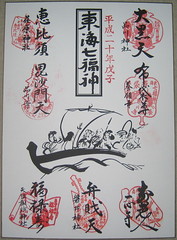
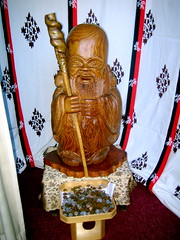

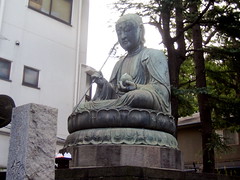
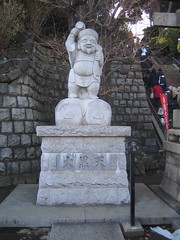
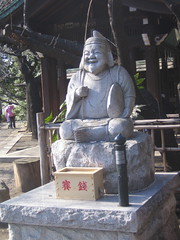
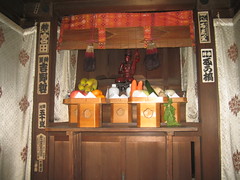
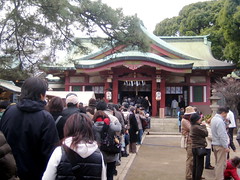
Leave a Reply